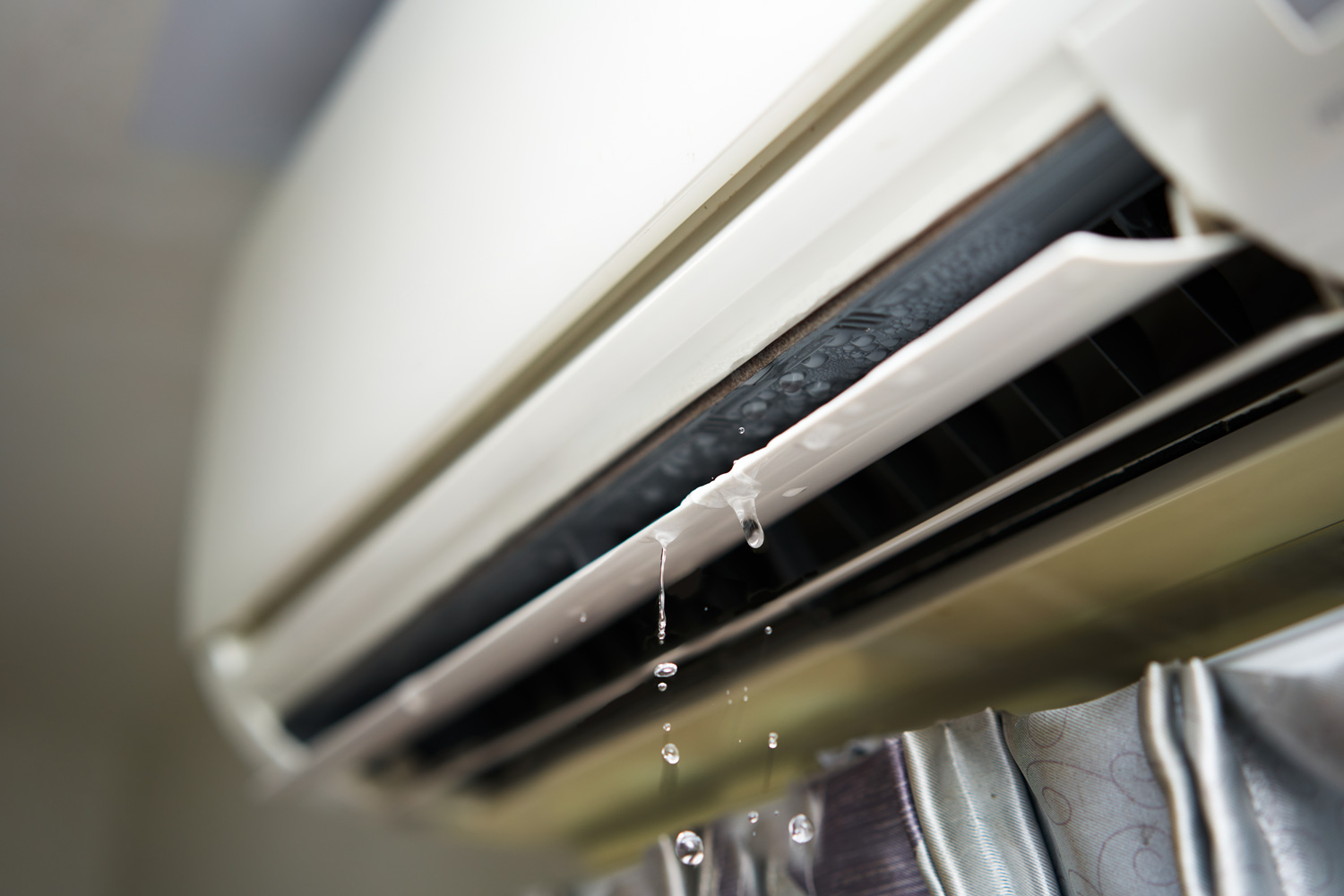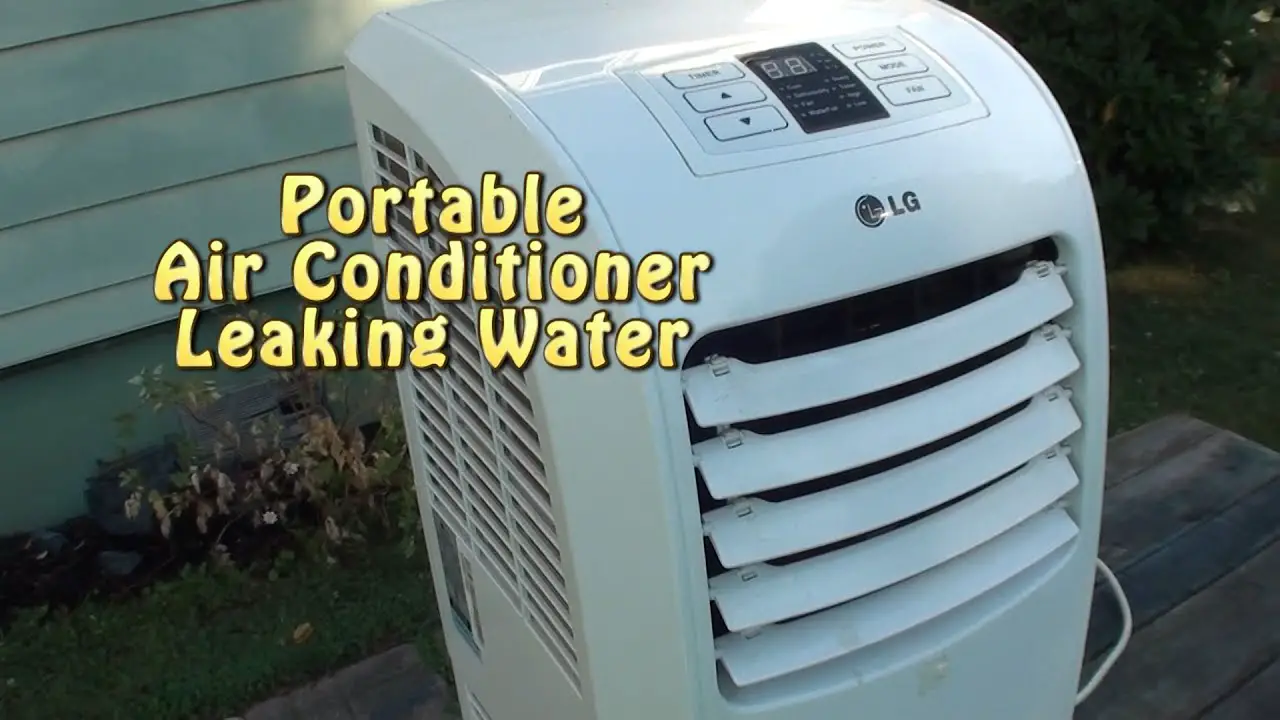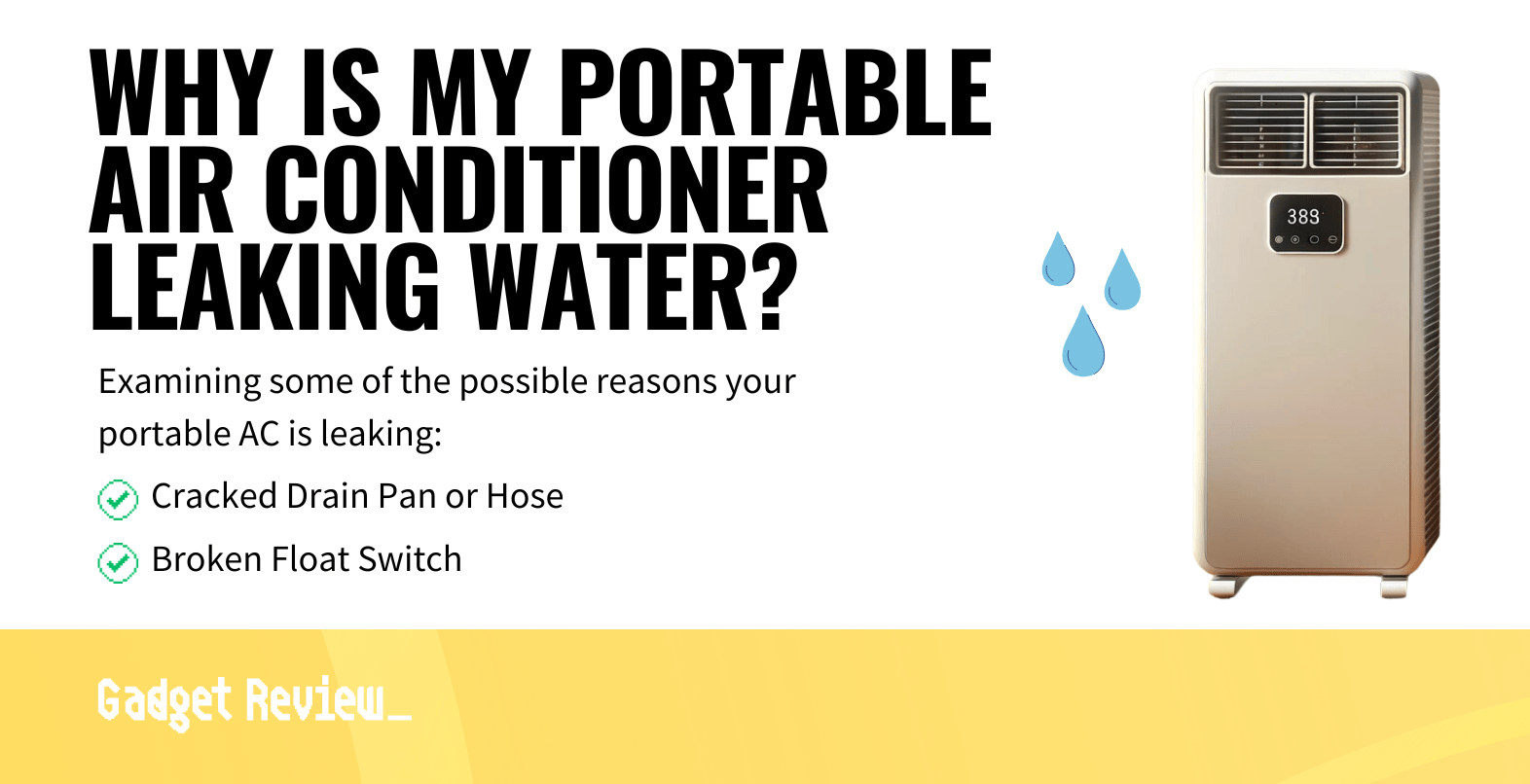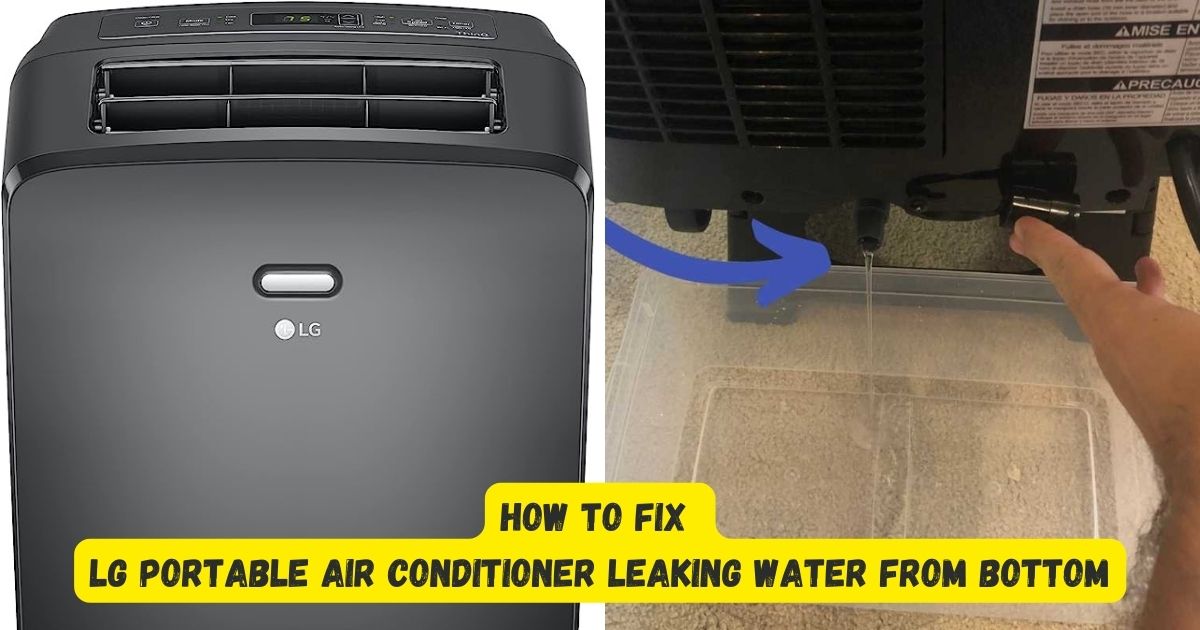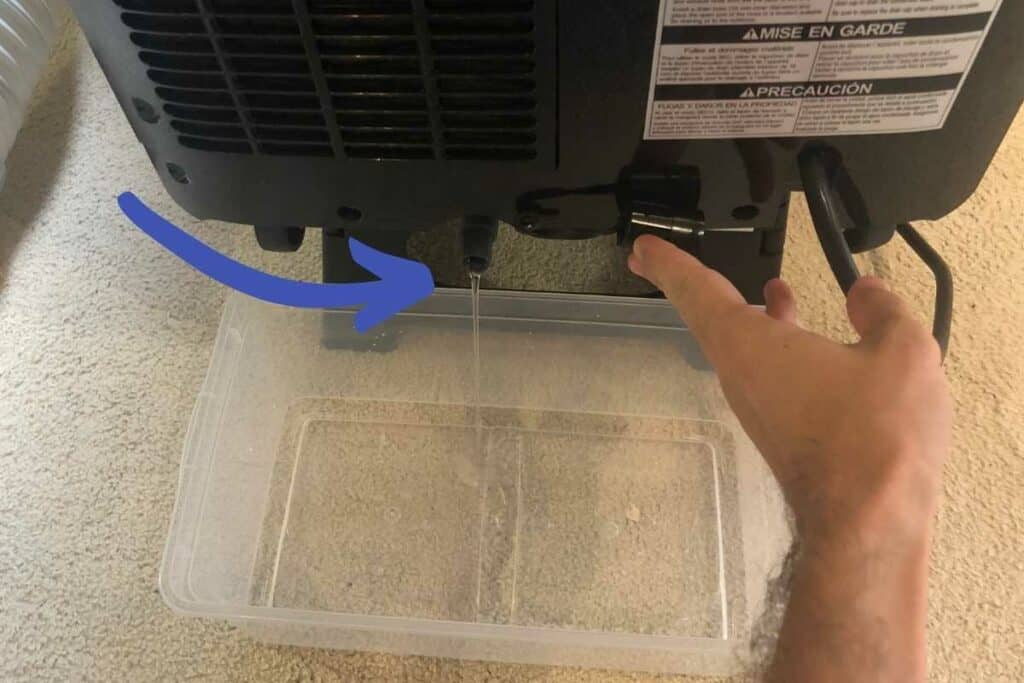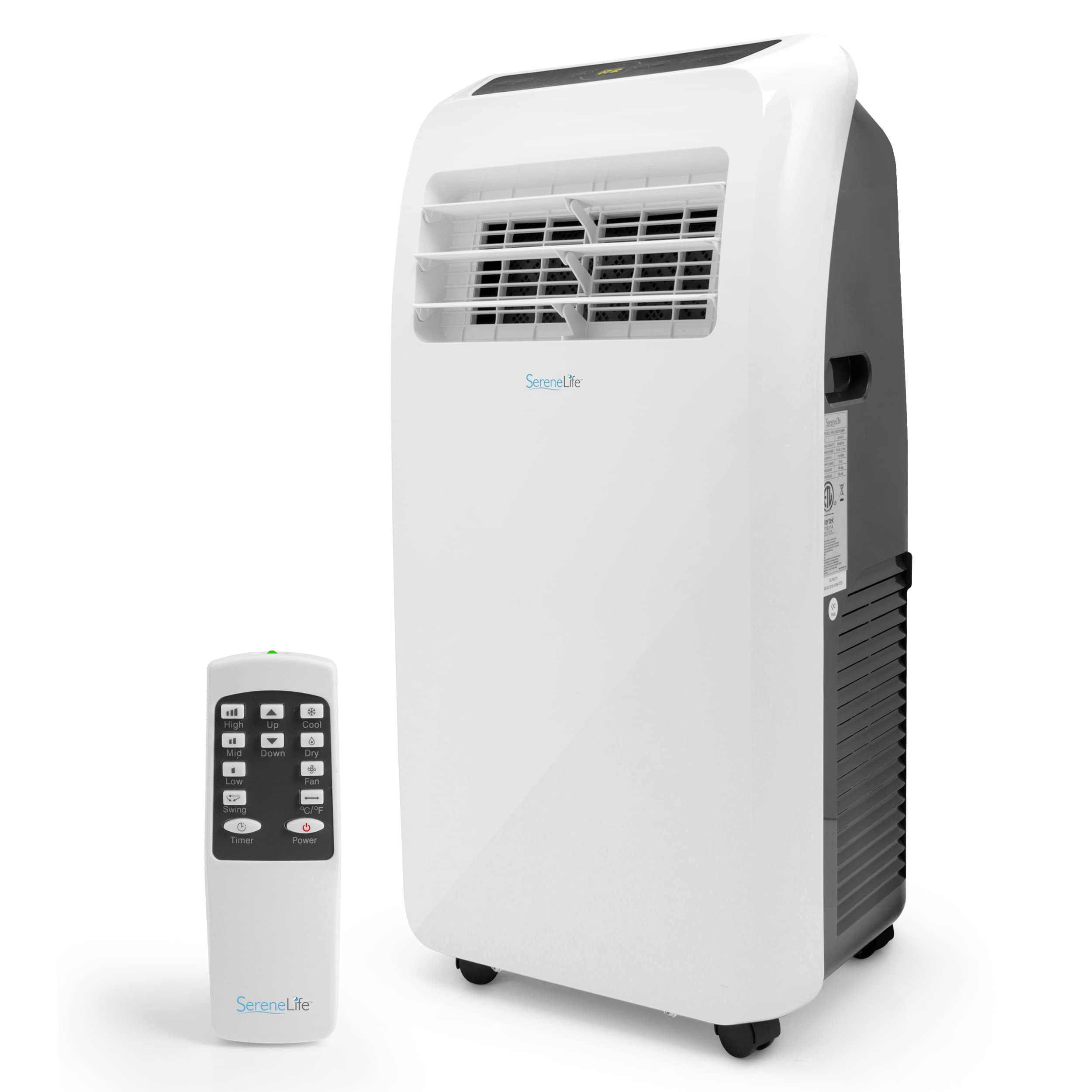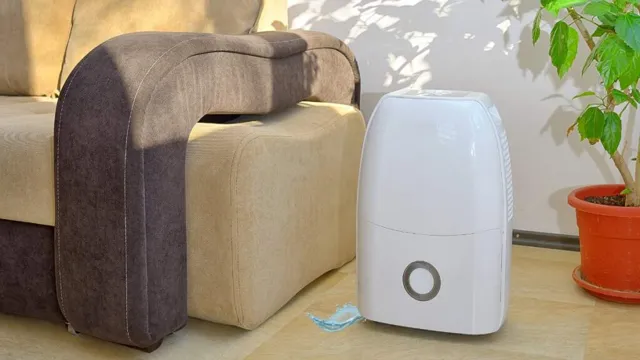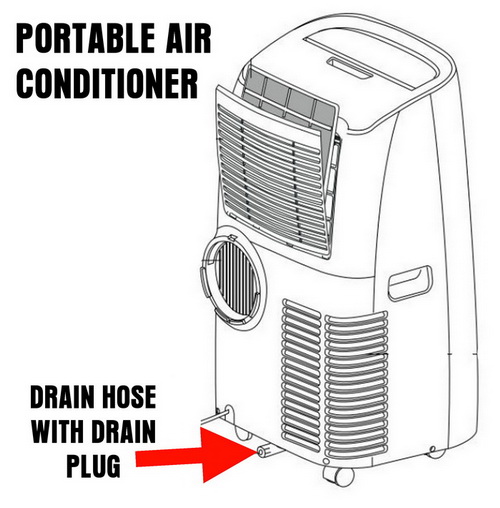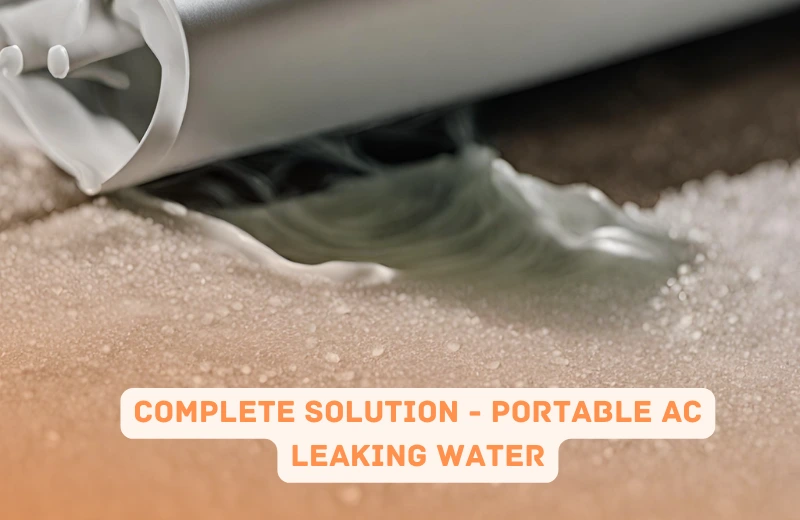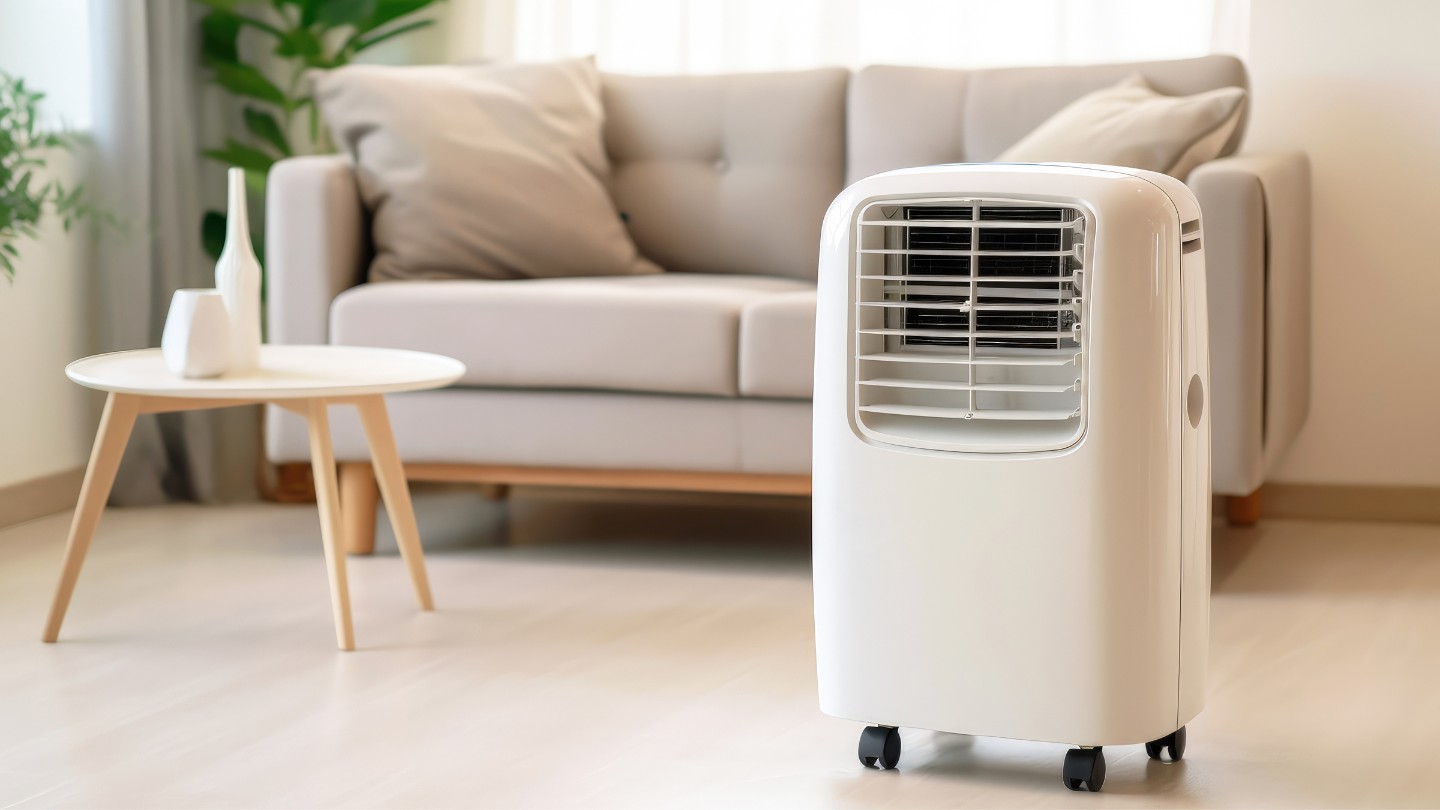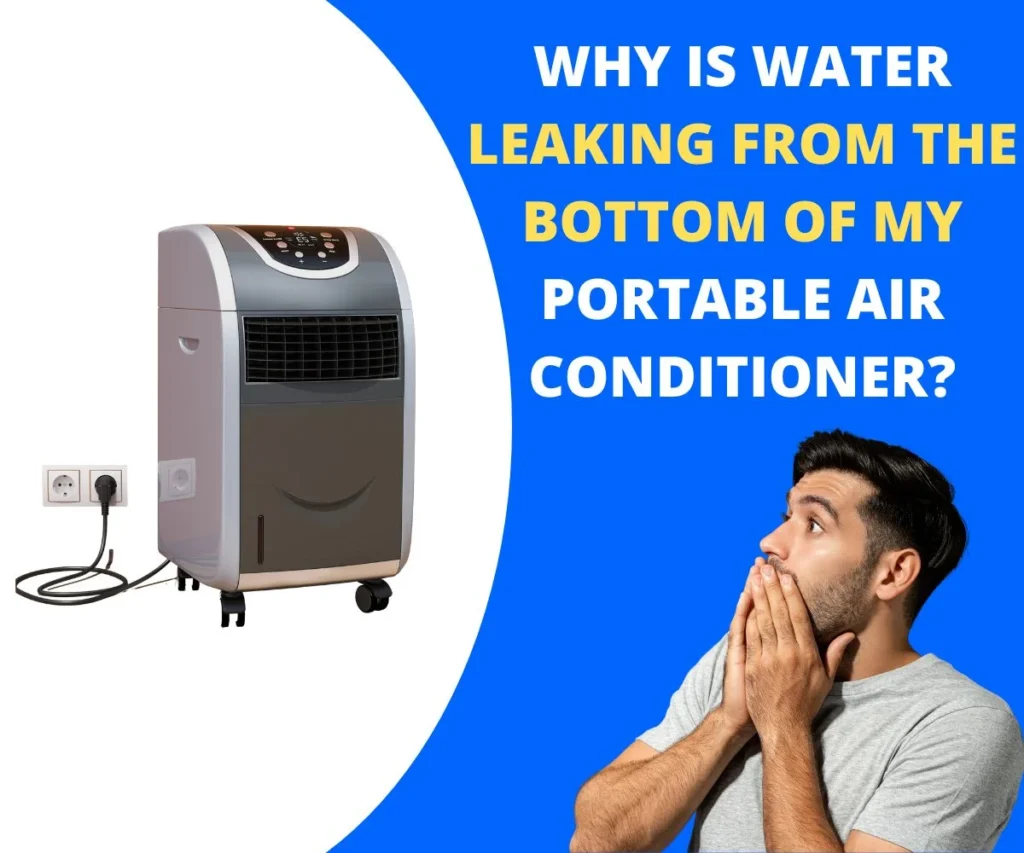My Portable Ac Is Leaking Water
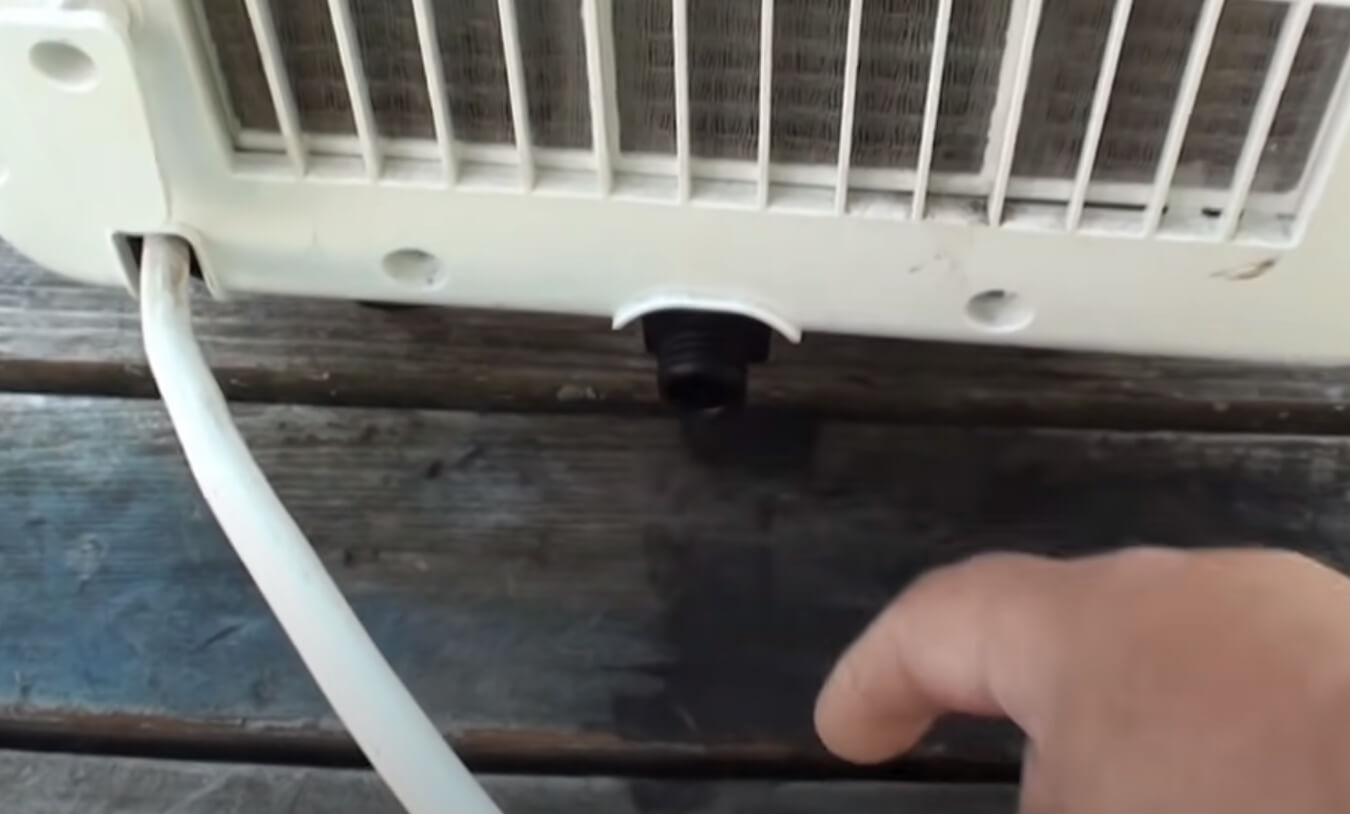
The gentle hum that once signaled blissful relief from the summer heat had transformed into a disconcerting gurgle. A small puddle, innocent at first, had grown into a miniature indoor lake. My portable air conditioner, my trusted companion in the battle against soaring temperatures, was betraying me. It was leaking.
This isn't just a personal anecdote; it's a surprisingly common summer woe. Portable AC units, while offering a flexible cooling solution, are prone to leaks. Understanding why, and knowing how to fix it, can save you from soggy carpets and sweltering discomfort. This article delves into the causes of portable AC leaks, offers practical solutions, and explores preventative measures to keep your cool without the water damage.
The Culprit: Condensation and Drainage
Portable air conditioners work by drawing warm air in, cooling it with refrigerant, and expelling the now-cooled air back into the room. This process creates condensation. Just like a cold glass of water on a humid day, moisture forms.
This condensation needs to go somewhere. Usually, it’s collected in a tank or evaporates through the exhaust hose. Problems arise when these systems fail.
Clogged Drains: The Primary Suspect
The most frequent cause of leaks is a clogged drain. Dust, debris, and even mold can accumulate in the drain line or the condensate pan, blocking the flow of water.
This blockage causes the water to back up and overflow, leading to those unwelcome puddles. A simple cleaning can often resolve this issue.
Many models come with a drain plug, allowing you to empty the tank manually. However, if the unit is consistently leaking even after emptying the tank, a clog is the likely culprit.
Humidity Levels: A Supporting Role
High humidity levels can exacerbate the problem. The more humid the air, the more condensation the AC unit produces.
If your unit's drainage system is already struggling, a particularly humid day can push it over the edge, resulting in a leak.
According to the EPA, maintaining indoor humidity between 30-50% is ideal, not only for preventing AC leaks but also for overall health and comfort.
Troubleshooting and Solutions: A Step-by-Step Guide
Before calling a professional, there are several troubleshooting steps you can take.
Step 1: Unplug and Assess
Safety first! Always unplug the AC unit before inspecting it. Then, carefully examine the unit for any obvious signs of damage or blockage.
Check the drain hose, if your unit has one, for kinks or obstructions. Look for any visible cracks or leaks in the condensate pan.
Step 2: Clean the Drain
Locate the drain plug or outlet. Use a small brush, pipe cleaner, or even a cotton swab to gently clear any debris from the drain opening.
You can also try using a wet/dry vacuum to suck out any stubborn blockages. Be gentle to avoid damaging the components.
For units with a drain hose, detach the hose and flush it with water to ensure it's clear. Sometimes, a simple flush is all it takes.
Step 3: Check the Condensate Pan
The condensate pan is usually located at the bottom of the unit. Carefully remove it and inspect it for cracks or damage.
If the pan is cracked, it will need to be replaced. You can usually find replacement parts online or at appliance stores.
Even without cracks, the pan can accumulate mold and mildew. Clean it thoroughly with a mild bleach solution to prevent future clogs.
Step 4: Consider a Condensate Pump
In very humid environments, a condensate pump can be a worthwhile investment. These pumps automatically remove the water from the unit, preventing it from overflowing.
They are especially useful if you are unable to drain the unit by gravity, such as when the drain outlet is higher than the unit itself.
Condensate pumps are relatively inexpensive and easy to install, providing a reliable solution for persistent leaking problems.
Prevention is Key: Maintaining Your Portable AC
Regular maintenance can significantly reduce the risk of leaks. Here are a few preventative measures to keep in mind.
Regular Cleaning
Clean the unit's filters regularly, typically every two to four weeks. Dirty filters restrict airflow, causing the unit to work harder and produce more condensation.
Wipe down the exterior of the unit with a damp cloth to remove dust and grime. This will also help prevent debris from entering the unit.
At the end of the season, thoroughly clean the unit, including the drain and condensate pan, before storing it away. This will prevent mold and mildew from growing during the off-season.
Proper Placement
Ensure the unit is placed on a level surface. A tilted unit can cause the water to accumulate unevenly and potentially leak.
Avoid placing the unit in direct sunlight, as this can increase the amount of condensation it produces. Keep the exhaust hose as straight as possible for efficient ventilation.
Make sure the exhaust hose is properly sealed to the window to prevent warm, humid air from entering the room. This will reduce the amount of condensation the unit needs to handle.
Beyond the Leak: Other Potential Issues
While leaking is a common problem, portable AC units can experience other issues as well. These include poor cooling performance, unusual noises, and error codes.
If your unit is not cooling effectively, check the filters and exhaust hose. Ensure the room is properly sealed and that the unit is the correct size for the space.
Unusual noises can indicate a problem with the fan or compressor. Consult the manufacturer's instructions or contact a qualified technician for assistance.
Error codes can provide valuable information about the nature of the problem. Refer to the unit's manual for a list of error codes and their corresponding solutions.
When to Call a Professional
If you've tried the troubleshooting steps above and your portable AC unit is still leaking, it's time to call a professional. A qualified technician can diagnose and repair more complex problems, such as refrigerant leaks or compressor issues.
Attempting to repair these issues yourself can be dangerous and may void the warranty. It's best to leave these repairs to the experts.
The cost of a professional repair can vary depending on the nature of the problem and the technician's hourly rate. However, it's often more cost-effective than replacing the entire unit.
A Cooler Tomorrow
A leaking portable AC unit can be a frustrating experience, but it doesn't have to ruin your summer. By understanding the causes of leaks, following the troubleshooting steps outlined above, and practicing regular maintenance, you can keep your unit running smoothly and prevent future problems.
Remember, a little bit of preventative care can go a long way in ensuring a cool and comfortable summer. And if all else fails, don't hesitate to call in the professionals.
So, take a deep breath, grab a screwdriver (and maybe a towel), and get ready to tackle that leak. With a little effort, you'll be back to enjoying the cool, refreshing air of your portable AC in no time.
